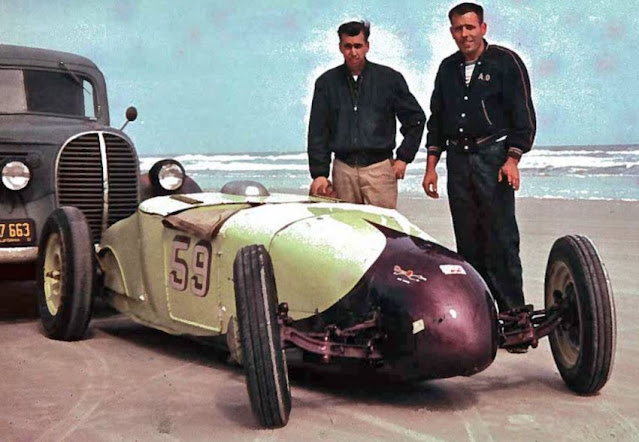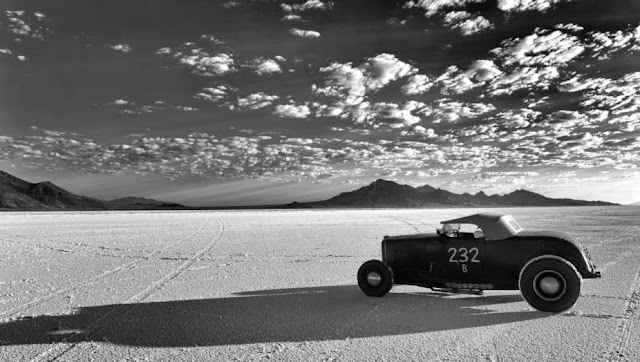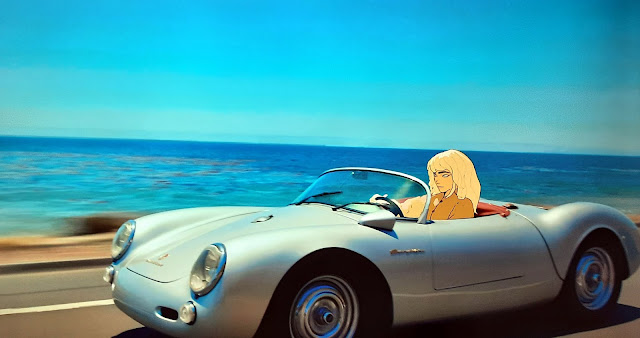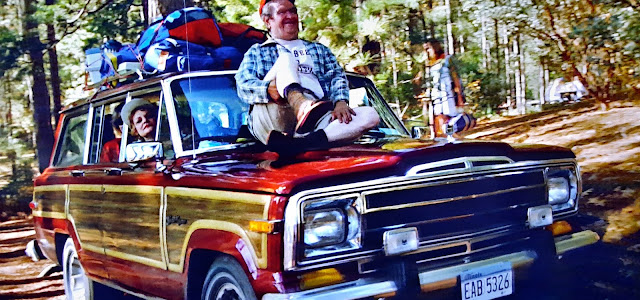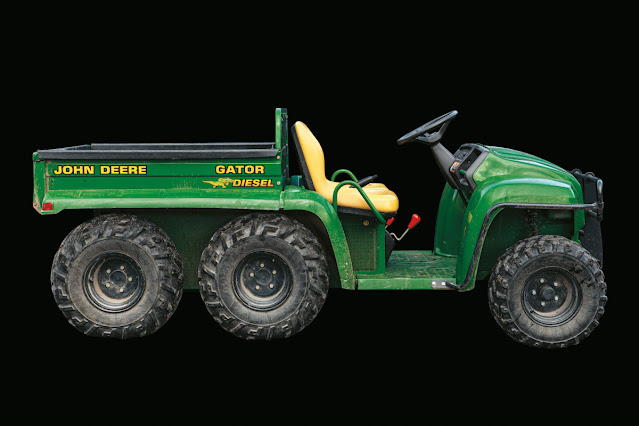Saturday, September 11, 2021
there's no guessing what you'll come across out there on the highways, so, I hope you have a camera phone ready to snap a photo for posterity
Marc Gewertz photography
in my opinion, one of the top 10 photographers of cars in the business. It's very impossible to rank them, but easy to say who the best are.
https://www.fuelcurve.com/images-from-the-artistic-eye-of-marc-gewertzInteresting animation of a Porsche 550 Spyder, from Disney and Billie Eilish, directed by Robert Rodriguez and co-director Patrick Osborne who is an Oscar-winning Disney animator, accompanied by the Los Angeles Philharmonic
the only half decent clip of the animated Porsche is at https://www.msn.com/en-us/autos/news/watch-the-disney-plus-trailer-for-billie-eilishs-happier-than-ever-a-love-letter-to-la/vp-AAO3ke1
unless you're a Disney + subscriber, then you can see it on https://disneyplusoriginals.disney.com/movie/happier-than-ever-a-love-letter-to-los-angeles
But in order to see all the bits of animation, which are not sequentially in a video, as snippets are here and there throughout the concert movie, so you have to waste a lot of time watching the concert movie. I'm only interested in seeing the animated video, because animation art. You know? But that's not possible, not that I could find.
The film is just the latest entry in the star’s recent streaming with the releases of an Apple TV+ documentary and Prime Video’s three-episode musical special. It’s probably to keep fans hanging on with live material from the album before she can embark on her tour in February of 2022.
the irony is that the album, or movie, or both, is named a Love Letter To LA, but the songs contradict that, where the album is the setting for having strangers appear on her doorstep (“Getting Older”), being forced to meet with lovers under a pseudonym (“Billie Bossa Nova”), being chased and scrutinized by members of the press (“OverHeated”), having her life threatened by a stalker (“NDA”), and fretting over someone who keeps calling her while drunk behind the wheel (“Happier Than Ever”).
So, is it just angsty? Or angry? Or an obvious marketing strategy.
compliment of the day
That is a very interesting story, another rare find. your ability to search this stuff out continues to amaze and delight! Thanks!!
The Beavers Dad
For Steve B, who loves the Wagoneers. Also, for everyone that enjoyed John Candy movies, here's the Grand Cherokee from the movie the Great Outdoors
Friday, September 10, 2021
there once was an engine production company about 90 years ago that got stiffed on the payment for a half a million dollars of engines they'd sold to Durant.... they ended up using bodies to try and sell cars to make up that lost income

Continental was an engine builder, and supplied engines for over 100 name plates in the 1910s, 1920s, and 1930s, including Durant Motors Corporation which used the engines in its Star, Durant, Flint and Rugby model lines.
The 1933 Continentals were marketed in three model ranges: the largest and most expensive was the six-cylinder Ace, next was a smaller six called the Flyer and also the low-priced four-cylinder Beacon. The 1933 Beacon roadster was the lowest price full-size car offered for sale in the United States in the 1930s, costing only $US335.
This truck was taken off the road in 1940, one year before the United States joined World War 2. That's 80 years ago, but the folks at "Jennings Motor Sports" decided to give it a second chance.
I've never heard of the John Deere Gators at the twin towers until now
Tim Mullally has owned the John Deere dealership in Jeffersonville for 40 years, and he’s the one who has supplied the locals with their rugged UTVs. But these aren’t just any Gators straight from the factory; many of the vehicles you’ll find in the garages and sheds of Sullivan County, Hranek’s included, are the ones Mullally brought to Ground Zero in the aftermath of 9/11.
Half of his dealership was an Irish pub and the other half was a John Deere dealership.
"My representatives from John Deere were there that day,” he remembers of September 11, 2001. “We were writing an order and we were sitting in the pub, and my brother-in-law lived in Manhattan; he called up and said a plane just hit the World Trade towers.”
So Mullally did the same thing many people did when they first heard: he turned on the TV.
“I was up all night long watching this. You could see that later on they were using golf carts and this and that to try to move equipment and do whatever,” he says. “I knew right away that the Gator would be an ideal vehicle for that.”
Along with 2 John Deere territory managers, Mullally put together a plan, and the three quickly found themselves on a barge with five of the vehicles — beefed up with run-flat tires, brush guards and heavy-duty air filters — crossing the Hudson River over to Manhattan and into what Mullally describes as “bedlam.”
“There was nobody in charge. We’d stop people, firemen, whatever, and ask what we could do and nobody knew anything,” he says. “So all of a sudden somebody said, ‘Well, can you do this? Can you do that?’ So we split up and started using them to transport oxygen and acetylene tanks, anything that would fit in the bed to take to what they call ‘The Hole.’”
It didn’t stay disorganized for long. Instead of dropping off the vehicles, helping out for a bit and calling it a day, Mullally stayed in Manhattan running a Gator himself and organizing where the others would go, including dozens of additional vehicles that were shipped to the site over the following weeks.
According to John Deere PR, the company donated more than $500,000 in equipment at the time for use at Ground Zero, as well as the Pentagon and the crash site of United Airlines Flight 93 in Pennsylvania.
Mullally loaned them to the New York City Fire Department, the NYPD, the FBI, FEMA — any agency that wanted one. Going back upstate every night was initially unfeasible, so he stayed in his
Before going to his temporary home after a shift, Mullally recounts driving firefighters back to their stations throughout the city; the other option for many of them was to simply walk the long blocks carrying all their gear. While Mullally previously described one experience of “thousands of people on the West Side Highway from Canal Street up … cheering” for his passengers, reminiscent of the nightly cheers for healthcare workers during the COVID-19 pandemic, what he remembers today is the overwhelming sorrow of those drives.
But there were dozens of Gators beyond those donated, that Mullally needed to wrangle up in November once he and the vehicles were no longer needed in Manhattan, and getting them out was in some ways harder than bringing them in.
Despite equipment being readily available by then, Mullally says some people in certain agencies thought the Gators “were the spoils of war and wanted to keep them.” He found some on Roosevelt Island, others in a warehouse at the Fulton Fish Market, and he often had to steal them back, because “everybody was stealing them from everybody else.” He says “steal” because those who had them would sometimes remove the steering wheels or ignitions when the vehicles were parked, so Mullally carried around spare steering wheels and ignitions to get them back. Eventually he rounded up most of the UTVs that weren’t donated, bringing them to his dealership upstate, refurbishing them and selling them to folks around town.
“When we bought our house Upstate, all my neighbors were like, you need a John Deere Gator! What happened was, after 9/11, John Deere gave all these Gators to the disaster site. When they were done being used, they brought them back, overhauled them and sold them.
My neighbor was like, ‘They have a whole bunch of these that came out of the World Trade that they’ve reconditioned, you should go buy one.’ I’ll tell you, I couldn’t live up there without it, I couldn’t have built my house without it. We have the most fun. I’ve taught my daughter how to drive with that thing.” Matt Hranek
https://www.insidehook.com/article/history/john-deere-gators-ground-zero-golf-carts
The cyclist who saved Jews in wartime Italy, Gino Bartali, the most renowned Italian cyclist before the Second World War, having won the Giro d'Italia twice, in 1936 and 1937, and the Tour de France in 1938 and 1948 thank you Doug M !
In the middle of the 1938 Tour de France, Mussolini published a Manifesto on Race, which led later to Jews being stripped of citizenship or any position in government or the professions.
His role in the network was uniquely suited to his talents - he became a courier. On the face of it he was undertaking the long training rides for which he was renowned, but in reality he was carrying photographs and counterfeit identity documents to and from a secret printing press, because he was was known to cover large distances with his bicycle for training purposes, he hid forged documents in his bike frame and handle bars, forged documents that were produced by the Assisi network, another rescue operation initiated by Church people in that town.
When Bartali was stopped and searched, he specifically asked that his bicycle not be touched since the different parts were very carefully calibrated to achieve maximum speed.
At the age of 11, in order to attend middle school in Florence, Gino needed transportation. With his own earnings and with help from his father and sisters, he purchased his first bicycle. While riding the hilly roads of the region, Bartali started to develop and refine his racing skills. In 1931, at the age of 17, he won his first race.
On June 10, 1940, Italy declared war on France and Great Britain. In October, Bartali was called to active duty. Because of an irregular heartbeat, he was assigned to be an army messenger. Allowed to use his bicycle for his missions, Bartali was able to continue training and racing for the next three years.
As the war progressed and cycling races were cancelled, Bartali's cover began to appear less credible. In July 1944, Bartali was interrogated at Villa Triste (Sorrow House) in Florence, where local Fascist officials imprisoned and tortured their prisoners. Fortunately, one of Bartali's interrogators happened to be his one-time army commander, who convinced the other interrogators that Bartali was innocent of any charges.
He went on to win the Giro d'Italia in 1946. With a stunning performance in the mountains of France, he won the 1948 Tour de France (10 years after his first Tour de France victory).
The program will offer children between the ages of 14-17 the opportunity to apply to attend a course dedicated to training riders in mountain biking, road cycling, BMX and track cycling.
Up to 24 children from across the world will be accepted onto the course with the program dedicated to involving participants from all different faiths and socio-economic backgrounds.





